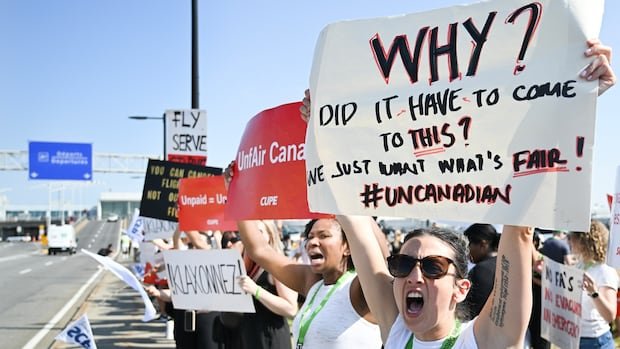Canada is witnessing an increase in labor strikes, with unions signaling further action as workers grapple with tariffs and a growing affordability crisis. Labor leaders are gearing up for potential confrontations with a federal government that has repeatedly intervened to end strikes, prompting discontent among union members. The Union of National Employees President, Alisha Kang, emphasized the need for tangible support rather than mere rhetoric from authorities.
Recent tensions peaked when Air Canada’s flight attendants defied a back-to-work order from Ottawa, risking penalties and legal action. However, a resolution was swiftly reached the following day. The Prime Minister’s Office, in a Labor Day statement, underscored its commitment to collaborating with unions to strengthen the country.
Despite Prime Minister Mark Carney’s campaign promises to bolster Canadian jobs, union representatives like Kang express disappointment in the lack of concrete actions to protect workers. Encouraged by a surge in strike mandates, the Canadian Labour Congress highlights the mounting challenges faced by workers, including job losses due to trade conflicts and the rising cost of living.
Recent data from Statistics Canada reveals a significant increase in labor disputes, reaching the highest level since 1986 in 2023. The federal government’s frequent use of back-to-work orders under Section 107 of the Canada Labour Code has drawn criticism and legal challenges from unions, citing violations of the right to strike.
Experts suggest that the labor unrest reflects long-standing issues of job insecurity and declining job quality exacerbated by economic pressures. The ongoing trade war’s impact on the economy continues to fuel discontent, with unions advocating for workers’ rights and fair treatment.
As the labor landscape evolves, the federal government faces scrutiny for its handling of labor disputes. Minister Patty Hajdu defended the government’s interventions, emphasizing the need to balance labor rights with broader societal interests. With the NDP’s diminished presence in Parliament, unions are navigating a changing political landscape and advocating for workers’ interests amidst ongoing challenges.
